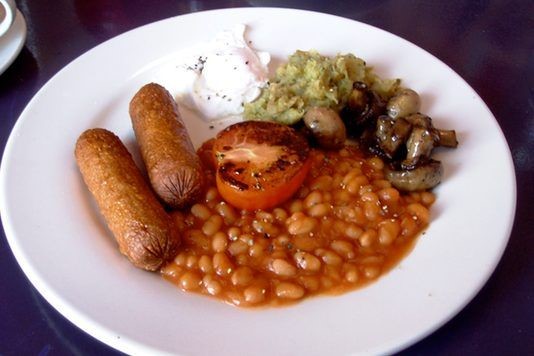
Food intolerances and lifestyle choices mean many have to switch mainstream ingredients for alternatives. But can substitutes ever match, or better, the original?
Suffering from food intolerances can be tricky. Do you feel you sound over-fussy at a restaurant reciting your list of no-can-do foods to the waiter? Attending a dinner party, quietly worrying about what you’re to be served (but too timid to put your hand up), can make for an uncomfortable experience.
But intolerances and allergies – which can at times be life-threatening– are becoming increasingly more common. At their request, I have often served celiac or vegetarian guests ‘alternative’ options when they’ve needed ingredient-switching. But how would I like the taste of the food they’re eating? Can substitute food ever be the primary choice for those fortunate enough not to have a limited culinary repertoire?
The Pasta Test
As a lover of all things Italian, I spend a fair amount of time loitering in pasta aisles. But while I’ll try just about anything once, I recently realised I’d snobbishly turned my back on ‘pasta alternatives’, ie, packs made from buckwheat, spelt, and so forth, for years. The sheer size of the ‘free from’ section in such aisles is hard to miss, but can any of it match the unique taste of durum wheat? I took a handful and tried them out.
First up was Biona Spelt Pasta. Would I have this again? Absolutely. The texture isn’t as firm, and the hue’s not as golden, but I’d be hard-pressed to notice the difference between my usual De Cecco or Buitoni packet and this – especially if served with the correct amount of salt and accompanying sauce.
Up next was Sainsbury’s Free From Corn Pasta. It drained like a lump of sticky putty and resembled a mound of polenta in the colander before some Extra Virgin Olive Oil perked it up. Still, I did notice feeling lighter and less-full post-meal and again, with the right sauce (I made a walnut and goat’s cheese Pesto), the pasta was eventually pleasantly edible.
I had the same experience with Buckwheat, Corn and Rice Pasta by Hale and Hearty, Orgran Buckwheat Pasta and Orgran Rice and Millet Pasta shells. What they lacked in obvious aesthetics, they made up for with taste. There are slight differences but they’re not as stark to urge me to call these brands and their varieties, ‘alternatives’. I’d try many again.
Sausages
Sausages are not only a form of meat, but also a shape. For recipes that traditionally rely on them (Toad in the Hole, Bangers n Mash), vegetarians still like to see a sausage – rather than a potato – in their plate. But what’s best to serve?
Rummaging through some meat-alternatives, I came across some interesting varieties. Tofurkey sausages were particularly tasteless, not least because their description of ‘tasting like turkey, but by way of a tofu filling’, failed to be appealing. Their alarmingly white ‘meaty’ colour and rubber-like texture was pretty off-putting, too.
The same can’t be said for another tried and tested batch: Quorn sausages. They are so similar to an ordinary banger, I struggled to tell the difference between the two. Equally genuine were Linda McCartney’s range, as well as Cauldron Cumberlands, which are mainly made up of soya protein.
And what is a banger if it’s not covered in Tomato Ketchup? Frankly, even when a sausage tasted a little less-than-authentic, a dollop of sauce made sure I stopped noticing any disparity whatsoever.
Cheese
I naturally stay clear of cheese when hosting for guests with dairy intolerances. But is that necessary? For those willing to try it, there are many Vegan cheese alternatives.You could make some Cashew Cheese if you’re feeling energetic in the kitchen, alternately, spread some Sheese on a packet of Le Pain des Fleurs’ Quinoa crackers, and you won’t be disappointed.
The packets, which come in ‘Smoked Cheddar Style’, ‘Strong Cheddar’, ‘Mozzarella’, ‘Garlic and Herb’, ‘Blue Cheese’ and ‘Cheshire’ style, are full of flavour and just as good as any other spreadable cheese. Leave your low expectations at the door and try this worthwhile product, and if you’re feeling nervous about a potential lack of authenticity, just wonder - have you ever thought about what goes into your Dairylea or Philadelphia tub to make it taste so ‘cheesy’? I was pleasantly surprised.
Alternative or Original?
Quorn, soya milk and non-alcoholic beverages are just some of the substitutes that have become so common-place, they’ve almost practically lost their ‘alternative’ tag.
And while I hardly scratched the surface of the abundant variety lurking on the ‘Free From’ shelves at my local supermarket, experiments with products such as spelt pasta and non-Dairy cheese, made it clear that there’s little use having a chip on one’s shoulder about intolerance-friendly food. For some people, there is no choice, and I’m heartened to know the options are wholesome and worth their price.
Would I go back for more? I still have vegan patties, falafel and many version of wheat-free bread still to try. Yet, I’ve been bought on the idea of Biona Pasta and have stuck to purchasing it since my brief experiment.
I have a new-found respect for ‘alternative food’, and really wish supermarkets wouldn’t help make us feel they are ‘different’ to the ‘norm’ by concealing them at the back of their stores. Of course, there are other places to go to find substitute food: Celia’s Kitchen Store, Goodness Direct, Naturally Good Food, plus many more. Fancy a change?
If you’re fortunate to be intolerances-free, attempt at making your favourite dishes with something different today.
And on that note….take a look at these:
So, you think you’re intolerant?
Henry Dimbleby's BuckwheatPancakes
Soya milk outdoes the competition
Image by Ewan Munro